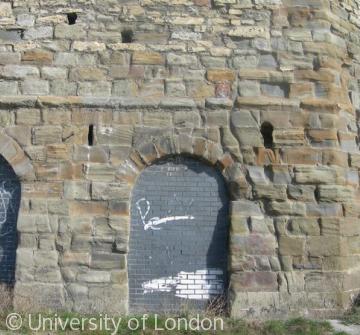Limekilns

Well-preserved remains of limekilns on the north bank of the Wear, near the Stadium of Light.
There were also limekilns at Hylton, Pallion and Fulwell. Light from the Fulwell kilns misled ships and was acknowledged a danger to navigation. Using up dross coal and locally quarried stone, lime became a major local industry during the 18th century. It was seasonal, with kilns lit in spring and extinguished in autumn. Much Sunderland lime was exported to Scotland.
The Southwick kilns were developed over many decades - various phases are easily visible, and the detail above shows a date of 1821 - by the Williamson family of Monkwearmouth, who were in this business by 1714 and continued for generations. The Williamsons also ran the Fulwell quarries and kilns.
Content generated during research for two paperback books 'Sunderland and its Origins: Monks to Mariners' (ISBN 13 : 9781860774799) and 'Sunderland: Building a City' (ISBN 13 : 978-1-86077-547-5 ) for the England's Past for Everyone series





